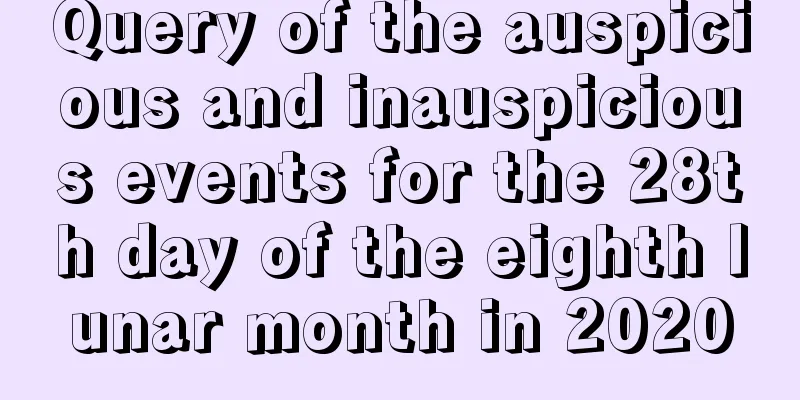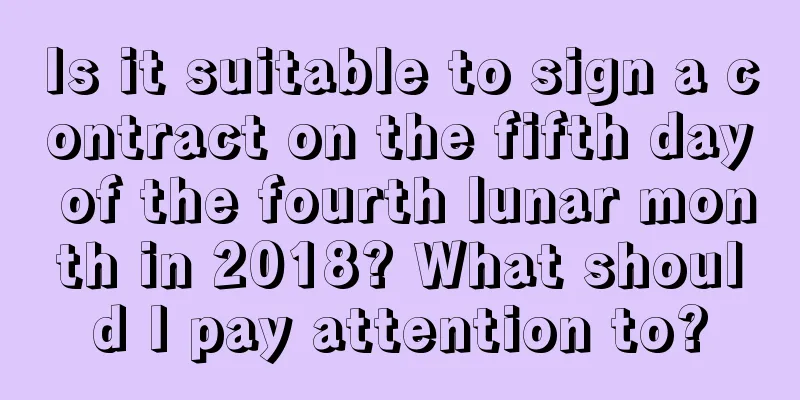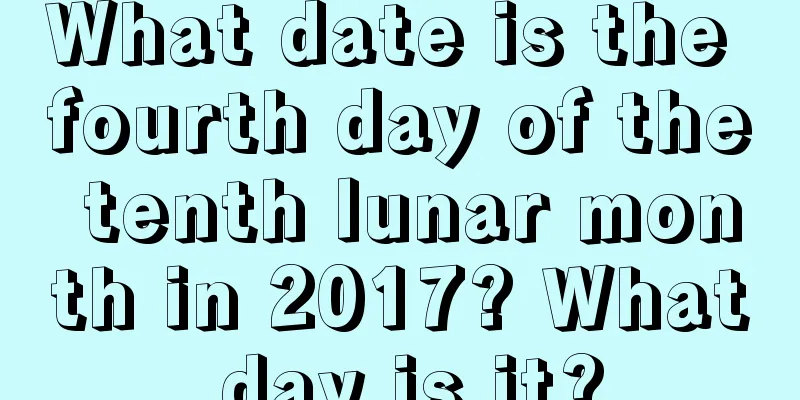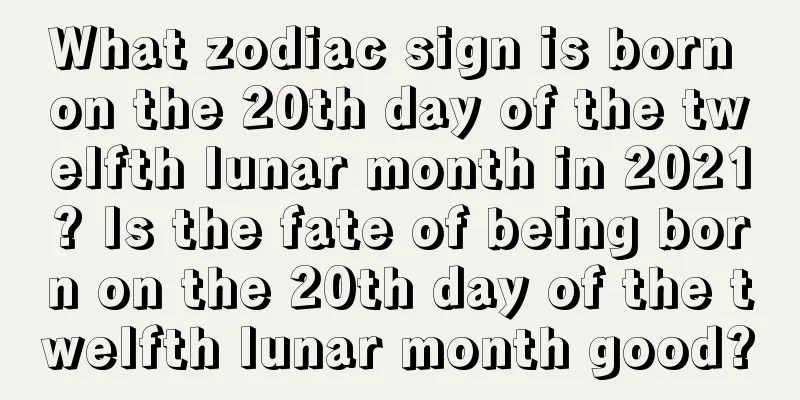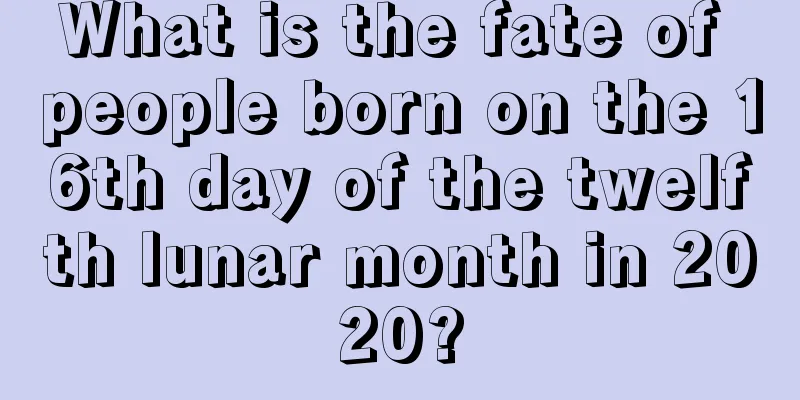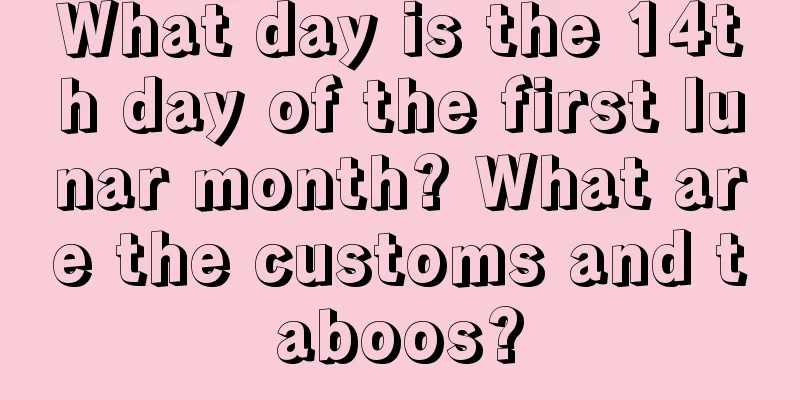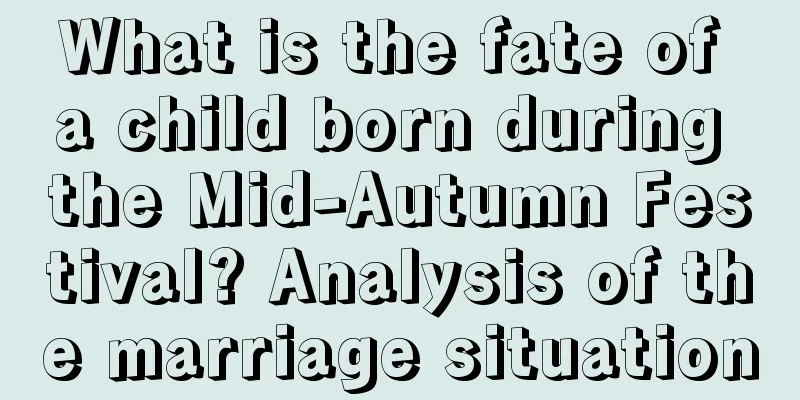The Feng Shui Story of Zhuge Liang's Tomb
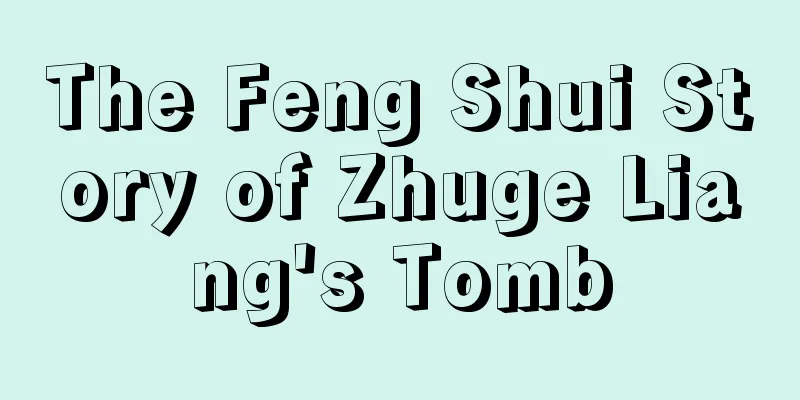
|
Introduction: Everyone must be familiar with Zhuge Liang. Zhuge Liang devoted his life to Liu Bei's cause until his death. However, no one knows where he was buried after his death. Why is that? In this issue, the editor will introduce to readers the Feng Shui story of the tomb of a wise prime minister - Zhuge Liang. Let’s follow the editor to learn about it! Folk wisdom is compiled into stories, including many Feng Shui stories. Let’s take a look at them. Legend of Zhuge Liang's Tomb 1People say that Zhuge Liang was buried in Dingjun Mountain after his death, but in fact it was just a fake tomb of his. Zhuge Liang was a man of great foresight. In order to prevent his tomb from being known to the world, he made arrangements before his death: only nine people were needed to bury him, eight to carry out the heavy work and one to keep the fire, and they would be given eight taels of silver after the task was completed. After Zhuge Liang died, eight skilled soldiers buried him. They were in a dilemma: How to divide the money? They said it would be fine if there was no one to light the fire, then each person would get just one or two ounces. After the eight people discussed it, they came up with an idea. At this time, the man who was cooking was thinking: This silver is not easy to divide. If things go wrong, I won't get any of it. It would be better to kill them. I can get eight taels of silver by myself. He found the poison, put it in the pot, and waited for them to come back for dinner. After a while, the people who were carrying the heavy loads came back, and they all started to attack the fireman with their poles, killing him. After the meal, when they were about to divide the money, the drugs took effect and they all died one after another. Therefore, people still don’t know where Zhuge Liang’s tomb is. Legend of Zhuge Liang's Tomb IIRegarding secret burials, the most mysterious story is that of Zhuge Kongming, an outstanding politician during the Three Kingdoms period. According to legend, Zhuge Liang's method of prolonging his life was destroyed because Wei Yan broke into Zhuge Liang's tent at night and accidentally kicked out the lamp, and Zhuge Liang became ill ever since then. On his deathbed, he wrote a letter to the later emperor Liu Chan, asking him to put his body into a coffin after his death and have four soldiers carry it southward. The place where the pole broke and the rope rotted would be his burial place. How could Liu Chan not obey the last words of the prime minister who had made great contributions to Shu Han? So he ordered four strong men from Guanxi to carry his coffin southward. After carrying the pole for a whole day and night, the four men were finally exhausted, but the pole was not broken and the rope was not rotten. The four men conspired and said, "Now that the prime minister is dead, the court has sent us to carry his coffin through the deep mountains and forests, without even an escort. Who are we working so hard for? It's nothing. We'll just dig a hole here and bury him!" So they dug a hole on the spot and buried Zhuge Liang's coffin. After returning, they reported to Liu Chan that the prime minister's coffin was buried where the poles were broken and the ropes were rotten. After hearing the report, Liu Chan felt something was wrong. How could the pole and rope break and rot so quickly? So the four people were arrested and interrogated strictly. The four strong men could not bear the physical pain and had to confess. Liu Chan was furious and executed the four men for deceiving the emperor. However, after the four strong men were killed, the world no longer knew where Zhuge Liang was buried. This story should end here. However, in order to exaggerate Zhuge Liang's wisdom, later generations believed that all this was within Zhuge Liang's expectations, because Kong Ming had long anticipated that after his death, Shu would be destroyed by the Sima family, and after the demise of Shu, the Sima family would come to dig his grave, so he "directed" this drama after his death to ensure his own peace after death. Both Cao Cao and Kong Ming adopted secret methods to deal with their afterlives, but the former was considered "treachery" while the latter was understood as "cleverness". The subtlety between these two points is worthy of careful consideration by future generations. There is a Wuhou Tomb in southern Shaanxi, which is said to be the final resting place of Zhuge Liang. After the failure of his fifth expedition against Wei, he became ill due to overwork and died in the army at Wuzhangyuan. According to his will, the Shu Han court buried him at the foot of Dingjun Mountain (now Dingjun Mountain in Mian County). But this is not a real burial place. The most peculiar thing in Wuhou Tomb is the two tall osmanthus trees next to it, known in history as the "Tomb Guarding Twins". They are located in front of the tomb, just like two guards guarding Zhuge Liang's tomb. This tree is 19 meters tall and over 1 meter in diameter. It was planted during the Three Kingdoms period. Because Zhuge Liang assisted Liu Bei in establishing the Shu Han regime and served as Prime Minister and Marquis of Wuxiang, people have called this tomb the Wuhou Temple for thousands of years. The earliest Wuhou Temple was built near Wuhou's tomb and at the foot of Dingjun Mountain. It was not until the Ming Dynasty that the temple was rebuilt to its current location. It is said that the Wuhou Temple in southern Shaanxi is the only temple dedicated to Zhuge Liang that was built by order of the emperor (Liu Chan, the last emperor of Shu Han), and it is fifty years earlier than the Wuhou Temple in Chengdu. The two steles in front of Zhuge Liang’s tomb. The one on the left was erected in the Jiawu year of the Wanli period of the Ming Dynasty, and the one on the right was erected in the 13th year of the Yongzheng period of the Qing Dynasty. The plaque reads "Double osmanthus flowing fragrance". Judging from the secrecy of the tomb and the degree of confidentiality, it has to be said that Cao Cao and Zhuge Liang, the two enemies during the Three Kingdoms period, were rare masters in the world. There are two tall osmanthus trees next to the tomb of Wuhou at the foot of Dingjun Mountain. It is known in history as "The Two Laurels Guarding the Tomb", also known as "The Two Laurels Flowing Fragrance". They are located in front of the tomb, just like two guards guarding Zhuge Liang's tomb. This tree is 19 meters tall and over 1 meter in diameter. It is said to have been planted when Zhuge Wuhou died, more than 1,700 years ago. There are cypress trees around the tomb. Originally there were fifty-four of them, but after years of wear and tear, only about twenty of them are left. The fate of the tombs of emperors, prime ministers, civil and military officials, various bureaucrats and celebrities of the same era as Cao Cao and Zhuge Liang was much more tragic. During the Three Kingdoms, Jin Dynasty and Southern and Northern Dynasties, a period of historical transition when wars never stopped and people were living in poverty, countless tombs scattered across the country were robbed, and many tombs of celebrities alone were looted. In the Wuhou Temple in the southern suburbs of Chengdu, there is an ancient tomb hidden among lush trees and bamboos. This is the tomb of Liu Bei, the emperor of Shu Han during the Three Kingdoms period, named Huiling. Liu Bei was a descendant of Liu Sheng, King Jing of Zhongshan. He was born into a poor family and started his own business from scratch. But he was indomitable, and he rose again and again after each failure. Eventually, he rose from a shoe seller and mat weaver to become a powerful ruler, and everyone called him a hero. Therefore, the great Tang Dynasty poet Liu Yuxi could not help but sigh in his poem "Temple of the First Lord of Shu": "The heroic spirit of the world is still awe-inspiring after thousands of years." This heroic and majestic aura even intimidated tomb robbers. "Youyang Zazu" recordsRecently, some thieves opened the tomb of the first emperor of Shu and saw two people playing chess with lanterns, accompanied by more than ten guards. The thief was frightened and thanked him. One of them looked back and said, "Would you like to drink?" So they each drank a cup, and begged for several jade belts, and were ordered to leave quickly. When the thief got outside, his mouth was already painted. The belt represents the energy of a giant snake. Looking at the hole, it is back to normal. This story is obviously a bit absurd, but it is an indisputable fact that Liu Bei's tomb was robbed. The tomb of Sun Ce, the elder brother of Sun Quan, the emperor of Eastern Wu during the Three Kingdoms period, was once looted. When Sun Ce was young, he was very capable and was known as the "Little Overlord". After his death, he was buried near Suzhou City. According to the "Record of the Tomb of King Sun" written by a Song Dynasty writer, tomb robbers once dug up Sun Ce's tomb and obtained many rare gold and jade artifacts, such as silver bowls, golden hairpins, etc. Later, the tomb robbers were captured and all the treasures were taken away by a man named Zhu Li. Soon, Sun Ce's tomb was abandoned and turned into an official kiln. The tomb of Zhuge Jin, Zhuge Liang's brother and a famous official of the Eastern Wu Dynasty, was also robbed during the Ming Dynasty. This fact is found in the book "Sangang Shiryu". The book says: There is a mound outside the east gate of Wu County, and the locals say it is the emperor's tomb. During the Ming Dynasty, a hunter went outside the Great Wall to hunt and saw a hole next to a mound of earth. So he sneaked in that night. After entering, he found a stone bed and a stone table inside, which were piled with gold and silver objects. The most amazing thing is that there is a treasure furnace inside, which is simple in shape and bright in color. This precious furnace later changed hands several times and was finally purchased by a local wealthy man. The rich man placed it on the table, and saw the smoke in the stove rise spontaneously and form five-colored clouds. What was even more strange was that a white crane could be vaguely seen flying among the clouds. There is a short stele in the tomb, and the words engraved on it indicate that the owner of the tomb is Zhuge Jin. Later, the government of Wu County captured the hunter and confiscated all the treasures. But the precious furnace was lost among the people and its whereabouts are unknown. |
<<: Analysis of the Feng Shui orientation of the front door in 2017
>>: Introduction to the Feng Shui story of the wealthy Li Ka-shing
Recommend
Is it okay to pray on the seventh day of the second lunar month in 2019? What is the hexagram on this day?
Generally, you need to choose an auspicious day to...
Is the 29th day of November in the lunar calendar 2021 an auspicious day?
The quality of a day is different every day, so le...
Is it appropriate to sign the contract on June 27th of the lunar calendar in 2020? Is the hexagram good?
Is it appropriate to sign the contract on June 27t...
How is the 11th day of the fifth lunar month in 2017? Is it a good idea to move into a new house?
Introduction: In the blink of an eye, the fifth mo...
Is May 22, 2018 a good day to go out?
Chinese people have always had a special fondness ...
June 28, 2020 is the eighth day of the fifth lunar month in the lunar calendar. Is it a good day?
June 28, 2020 is the eighth day of the fifth luna...
Is August 22, 2022, a lucky day in the lunar calendar? What are the key points for your fortune?
The arrival of good luck requires certain opportun...
Analysis of the do's and don'ts, good and bad situations at 20 o'clock on February 20, 2020!
The do's and don'ts, and the good and bad...
Is it suitable to travel on June 18th of the lunar calendar in 2022? What's the omen for this day?
The sixth month of the lunar calendar is also know...
Where is the lucky position of the God of Wealth on February 14, the third day of the Chinese New Year in 2021? Is today an auspicious day?
Introduction: The lucky position of the God of Wea...
Is April 13th of the lunar calendar in 2020 a good day? Is it a good day to pray for blessings?
The quality of praying is different depending on t...
Which came first during the Dragon Boat Festival, sweet rice dumplings or sweet rice dumplings? Which type of zongzi has a longer history?
It won’t be long before we arrive at the new year’...
How did people in ancient times celebrate the Great Heat? What customs and habits did they have?
Introduction: The Great Heat solar term has existe...
Is a child born on the sixth day of the sixth lunar month in 2020 a Leo?
The zodiac sign of children has always been a conc...
Is the fifth day of the eleventh lunar month in 2018 suitable for worshiping ancestors?
The traditional culture of sacrifice has a long hi...
